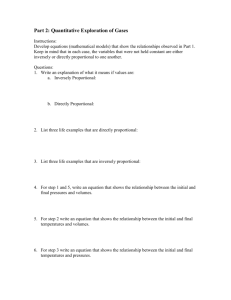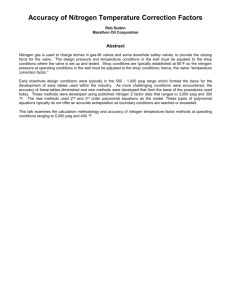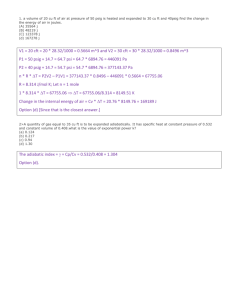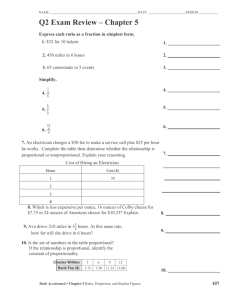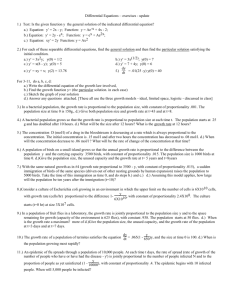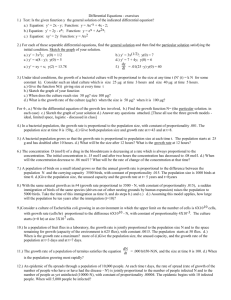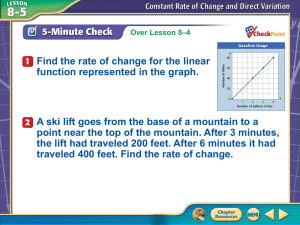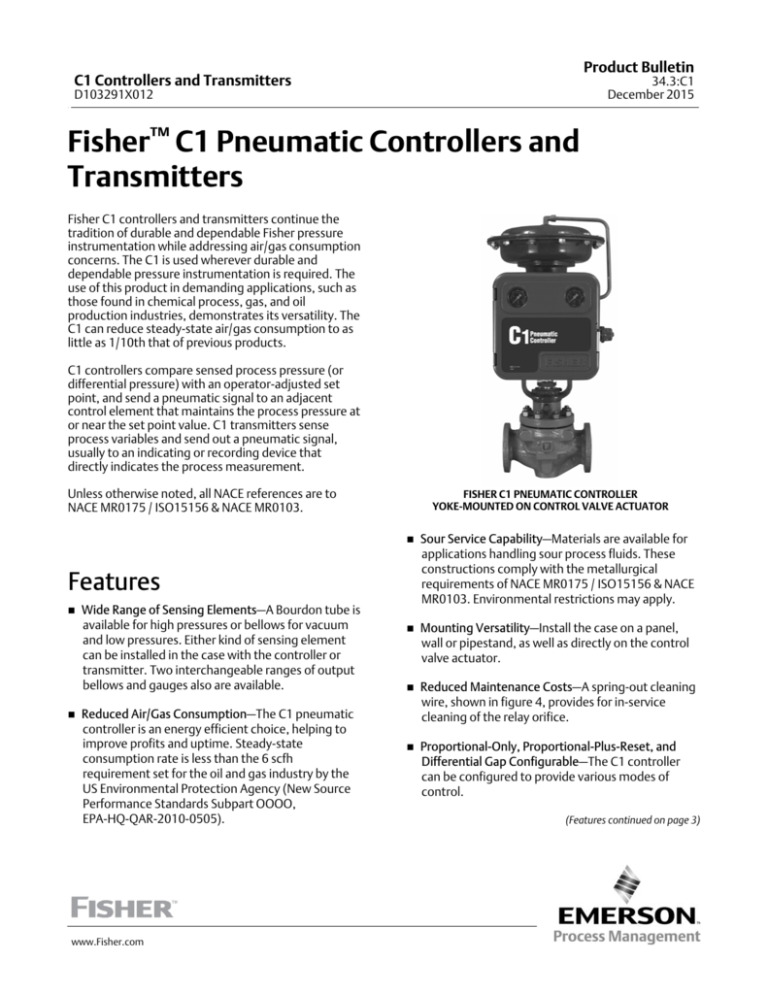
Product Bulletin
C1 Controllers and Transmitters
34.3:C1
December 2015
D103291X012
Fisher™ C1 Pneumatic Controllers and
Transmitters
Fisher C1 controllers and transmitters continue the
tradition of durable and dependable Fisher pressure
instrumentation while addressing air/gas consumption
concerns. The C1 is used wherever durable and
dependable pressure instrumentation is required. The
use of this product in demanding applications, such as
those found in chemical process, gas, and oil
production industries, demonstrates its versatility. The
C1 can reduce steady-state air/gas consumption to as
little as 1/10th that of previous products.
C1 controllers compare sensed process pressure (or
differential pressure) with an operator-adjusted set
point, and send a pneumatic signal to an adjacent
control element that maintains the process pressure at
or near the set point value. C1 transmitters sense
process variables and send out a pneumatic signal,
usually to an indicating or recording device that
directly indicates the process measurement.
Unless otherwise noted, all NACE references are to
NACE MR0175 / ISO15156 & NACE MR0103.
FISHER C1 PNEUMATIC CONTROLLER
YOKE-MOUNTED ON CONTROL VALVE ACTUATOR
n Sour Service Capability—Materials are available for
Features
n Wide Range of Sensing Elements—A Bourdon tube is
available for high pressures or bellows for vacuum
and low pressures. Either kind of sensing element
can be installed in the case with the controller or
transmitter. Two interchangeable ranges of output
bellows and gauges also are available.
n Reduced Air/Gas Consumption—The C1 pneumatic
controller is an energy efficient choice, helping to
improve profits and uptime. Steady-state
consumption rate is less than the 6 scfh
requirement set for the oil and gas industry by the
US Environmental Protection Agency (New Source
Performance Standards Subpart OOOO,
EPA‐HQ‐QAR‐2010-0505).
www.Fisher.com
applications handling sour process fluids. These
constructions comply with the metallurgical
requirements of NACE MR0175 / ISO15156 & NACE
MR0103. Environmental restrictions may apply.
n Mounting Versatility—Install the case on a panel,
wall or pipestand, as well as directly on the control
valve actuator.
n Reduced Maintenance Costs—A spring-out cleaning
wire, shown in figure 4, provides for in-service
cleaning of the relay orifice.
n Proportional-Only, Proportional-Plus-Reset, and
Differential Gap Configurable—The C1 controller
can be configured to provide various modes of
control.
(Features continued on page 3)
Product Bulletin
C1 Controllers and Transmitters
34.3:C1
December 2015
D103291X012
Specifications
Available Configurations
See table 1
Supply and Output Pressure Gauge Ranges
Input Signal
Pressure
Type: J Gauge pressure, J vacuum, J compound
pressure, or J differential pressure of a liquid or gas
Limits: See table 2 or 3
Proportional Band Adjustment
See table 5
For Proportional-Only Controllers: Full output
pressure change adjustable from J 2% to 100% of the
sensing element range for 0.2 to 1.0 bar (3 to 15 psig)
or J 4% to 100% of the sensing element range for 0.4
to 2.0 bar (6 to 30 psig)
Output Signal
Proportional or Proportional-Plus-Reset Controllers
and Transmitters: J 0.2 to 1.0 bar (3 to 15 psig) or
J 0.4 to 2.0 bar (6 to 30 psig) pneumatic pressure
signal
Differential Gap Controllers: J 0 and 1.4 bar
(0 and 20 psig) or J 0 and 2.4 bar (0 and 35 psig)
pneumatic pressure signal
Action: Control action is field reversible between
J direct (increasing sensed pressure produces
increasing output signal) and J reverse (increasing
sensed pressure produces decreasing output signal).
For Proportional-Plus-Reset Controllers: Full output
pressure change adjustable from J 3% to 100% of the
sensing element range for 0.2 to 1.0 bar (3 to 15
psig), or J 6% to 100% of the sensing element range
for 0.4 to 2.0 bar (6 to 30 psig)
Differential Gap Adjustment
For Differential Gap Controllers: Full output pressure
change adjustable from 15% to 100% of sensing
element range
Reset Adjustment
For Proportional-Plus-Reset Controllers: Adjustable
from 0.01 to 74 minutes per repeat (100 to 0.01
repeats per minute)
Supply Pressure Requirements(1)
See table 4
Supply Pressure Medium
Air or Natural Gas
Supply medium must be clean, dry, and noncorrosive
and meet the requirements of ISA Standard 7.0.01 or
ISO 8573-1.
A maximum 40 micrometer particle size in the air
system is acceptable. Further filtration down to 5
micrometer particle size is recommended. Lubricant
content is not to exceed 1 ppm weight (w/w) or
volume (v/v) basis. Condensation in the air supply
should be minimized
Zero Adjustment (Transmitters Only)
Continuously adjustable to position span of less than
100% anywhere within the sensing element range
Span Adjustment (Transmitters Only)
Full output pressure change adjustable from 6 to
100% of process sensing element range
Performance
Repeatability: 0.5% of sensing element range
Dead Band (Except Differential Gap Controllers(4)):
0.1% of sensing element range
Typical Frequency Response at 100% Proportional
Band:
Output to Actuator: 0.7 Hz and 110 degree phase shift
with 1850 cm3 (113 inches3) volume actuator at
mid-stroke
Output to Positioner Bellows: 9 Hz and 130 degree
phase shift with 0.2 to 1.0 bar (3 to 15 psig) output to
33 cm3 ( 2 inches3 ) bellows
Steady-State Air Consumption(2)(3)
0.2 to 1.0 bar (3 to 15 psig): 0.08 normal m3/hour
(3 scfh)
0.4 to 2.0 bar (6 to 30 psig): 0.12 normal m3/hour
(4.5 scfh)
Supply and Output Connections
1/4 NPT internal
-continued-
2
Product Bulletin
C1 Controllers and Transmitters
34.3:C1
December 2015
D103291X012
Specifications (continued)
Ambient Operating Temperature Limits(1)
Housing
J Standard Construction: -40 to 71_C (-40 to 160_F)
J High Temperature Construction: -18 to 104_C
Designed to NEMA 3 (Weatherproof) and IEC 529
IP54 Specifications
(0 to 220_F)
Hazardous Area Classification
Anti-reset windup (differential pressure relief) and
process pressure gauge options are only available in
the standard construction
Complies with the requirements of ATEX Group II
Category 2 Gas and Dust
Typical Ambient Temperature Operating Influence
Proportional Control only: ±3.0% of output span for
each 28_C (50_F) change in temperature between
-40 and 71_C (-40 and 160_F) for a controller set at
100% proportional band
Reset Control only: ±2.0% of output span for each
28_C (50_F) change in temperature between -40 and
71_C (-40 and 160_F) for a controller set at 100%
proportional band
Transmitters only: ±3.0% of output span for each
28_C (50_F) change in temperature between -40 and
71_C (-40 and 160_F) for a transmitter set at 100%
span
Meets Customs Union technical regulation TP TC
012/2011 for Groups II/III Category 2 equipment
II Gb c T*X
III Db c T*X
Construction Materials
See tables 2, 3, and 6
Approximate Weight
8.2 kg (18 pounds)
NOTE: Specialized instrument terms are defined in ANSI/ISA Standard 51.1 - Process Instrument Terminology.
1. The pressure and temperature limits in this document, and any applicable standard or code limitation should not be exceeded.
2. Normal m3/hr: normal cubic meters per hour (m3/hr, 0_C and 1.01325 bar, absolute). Scfh: standard cubic feet per hour (ft3/hr, 60_F and 14.7 psig).
3. To convert from air flow rate to natural gas flow rate multiply by 1.29.
4. An adjustable differential gap (differential gap controllers) is equivalent to an adjustable deadband.
Table 1. Available Configurations
AVAILABLE CONFIGURATIONS
DESCRIPTION(1)
Pressure
Bourdon Tube Sensing Element
(Gauge Pressure Only)
Bellows Sensing Element
Gauge Pressure
Proportional controller
Proportional-plus-reset
controller
C1D
Without anti-reset windup
With anti-reset windup
Differential Pressure
C1P
C1B
---
Differential-gap controller
---
Transmitter
C1D
1. See figure 4 and 5 for construction details.
Features (continued)
n Field Reversible—Switch action from direct to
reverse or vice versa without additional parts. As
illustrated in figure 3, transfer the reversing block to
the opposite side of the flapper, invert the
proportional band assembly and change the
feedback bellows tubing connections.
n Easy, More Accurate Adjustments—Make pressure
set point, proportional band, and reset changes
with simple dial-knob controls that help to assure
positive settings.
n Sensitive Response—Area ratio of large relay
diaphragm to small relay diaphragm permits small
nozzle pressure changes to induce much greater
output pressure changes.
3
Product Bulletin
C1 Controllers and Transmitters
34.3:C1
December 2015
D103291X012
Table 2. Bourdon Tube Pressure Ranges and Materials
MAXIMUM ALLOWABLE STATIC PRESSURE LIMITS(2)
PRESSURE RANGES(1)
Bar
With Optional Travel Stop(3)
Standard
Psig
Bar
Psig
Bar
Psig
0 to 2.0
0 to 4.0
0 to 7.0
0 to 30
0 to 60
0 to 100
2.0
4.0
7.0
30
60
100
3.3
6.6
11
48
96
160
0 to 14
0 to 20
0 to 40
0 to 70
0 to 100
0 to 200
0 to 350
0 to 200
0 to 300
0 to 600
0 to 1000
0 to 1500
0 to 3000
0 to 5000
14
20
40
70
100
200
350
200
300
600
1000
1500
3000
5000
19
29
50
83
115
230
380
280
420
720
1200
1650
3300
5500
0 to 550
0 to 700
0 to 8000
0 to 10,000
550
700
8000
10,000
550
700
8000
10,000
MATERIAL(4)
316 Stainless Steel
1. Range marked on Bourdon tube may be in kPa (1 bar = 100 kPa).
2. Bourdon tube may be pressured to limit shown without permanent zero shift.
3. With travel stop set at 110% of the range.
4. Bourdon tubes are also available in NACE compliant material. Contact your Emerson Process Management sales office for additional information.
Scan or click
to access
sales office
information
Table 3. Bellows Pressure Ranges and Materials
MAXIMUM ALLOWABLE
STATIC PRESSURE LIMITS(1)
Stainless Steel
Brass Construction
Construction
Bar
Psig
Bar
Psig
PRESSURE RANGES
0 to 150 mbar (0 to 60 inch wc)
0 to 340 mbar (0 to 10 inch Hg)
0 to 1.0 bar (0 to 30 inch Hg)
75 mbar vac. to 75 mbar (30 inch wc vac. to 30 inch wc)
1.4
2.8
2.8
1.4
20
40
40
20
----6.9
6.9
----100
100
Compound
pressure
500 mbar vac. to 500 mbar (15 inch Hg vac. to 7.5 psig)
2.8
40
6.9
100
1.0 bar vac. to 1.0 bar (30 inch Hg vac. to 15 psig)
2.8
40
---
---
Positive
pressure
0 to 150 mbar (0 to 60 inch wc)
0 to 250 mbar(2) (0 to 100 inch wc)
0 to 350 mbar(3) (0 to 140 inch wc)
0 to 0.35 bar (0 to 5 psig)
0 to 0.5 bar (0 to 7.5 psig)
0 to 0.7 bar (0 to 10 psig)
0 to 1.0 bar (0 to 15 psig)
0 to 1.4 bar (0 to 20 psig)
0 to 2.0 bar (0 to 30 psig)
1.4
1.4
2.8
2.8
2.8
2.8
2.8
2.8
2.8
20
20
40
40
40
40
40
40
40
------------6.9
--6.9
------------100
--100
0 to 200 mbar (0 to 80 inch wc)
0 to 0.7 bar (0 to 10 psi)
0 to 1.4 bar (0 to 20 psi)
0 to 2.0 bar (0 to 30 psi)
1.4
2.8
2.8
---
20
40
40
---
------6.9
------100
Vacuum
Gauge
pressure
Differential pressure(4)
1. Bellows may be pressured to limit shown without permanent zero shift.
2. C1B transmitter only.
3. Except C1B transmitter.
4. The overrange limit for these sensing elements is a differential pressure equal to the maximum allowable static pressure limit.
Table 4. Supply Pressure Data
Normal Operating Supply
Pressure(1)
Maximum Allowable Supply Pressure To Prevent
Internal Part Damage(2)
0.2 to 1.0 or 0 and 1.4 (differential gap)
1.4
2.8
0.4 to 2.0 or 0 and 2.4 (differential gap)
2.4
2.8
3 to 15 or 0 and 20 (differential gap)
20
40
6 to 30 or 0 and 35 (differential gap)
35
40
Output Signal
Bar
Psig
1. If this pressure is exceeded, control may be impaired.
2. If this pressure is exceeded, damage to the controller may result.
4
Product Bulletin
C1 Controllers and Transmitters
34.3:C1
December 2015
D103291X012
Table 5. Supply and Output Pressure Gauge Ranges
0.2 to 1.0 Bar (3 to 15 Psig) or
0 and 1.4 Bar (0 and 20 Psig) Output
Gauge Scale
0.4 to 2.0 Bar (6 to 30 Psig) or
0 and 2.4 Bar (0 and 35 Psig) Output
0 to 30 psig
0 to 2 kg/cm2
0 to 200 kPa
0 to 60 psig
0 to 4 kg/cm2
0 to 400 kPa
Dual
0 to 30 psig/0 to 200 kPa
0 to 60 psig/0 to 400 kPa
Triple
0 to 30 psig/0 to 2 kg/cm2/0 to 2 bar
0 to 60 psig/0 to 4 kg/cm2/0 to 4 bar
Single
Table 6. Construction Materials
Part
In contact with
process
In contact with
operating
medium
Other
Material
Bourdon tube
Stainless steel or NACE compliant N04400 nickel alloy(1)
Sensing bellows
Brass or stainless steel
Pressure block
Stainless steel or NACE compliant stainless steel(1)
Control tubing (from pressure block to sensing element
and to optional process pressure gauge)
Stainless steel or NACE compliant stainless steel(1)
All other interior tubing
Stainless steel
Exterior tubing
Copper (with or without PVC plastic lining), stainless steel, or
synthetic rubber
Exterior fittings
Brass or stainless steel
Nozzle and reversing block
Zinc/stainless steel
Relay springs and spring plate
Steel
Relay diaphragms
Nitrile/nylon (standard) or polyacrylate/nylon (high-temperature)
Other metal relay parts, proportional bellows,
and exhaust/reset bellows
Aluminum/stainless steel
Reset valve assembly and differential relief valve if used
Zinc/steel/ceramic
O-rings
Nitrile (standard) or fluorocarbon (high-temperature)
Gaskets
Chloroprene (standard) or silicone (high-temperature)
Case and adjustment dial
Aluminum
Cover
Aluminum, except glass for gauge windows
Flapper
Stainless steel
Control link
N04400 nickel alloy and/or stainless steel
Flexure and pressure/ setting adjustment assemblies
Aluminum/steel/stainless steel/plastic
Calibration adjustor
Zinc
O-rings
Nitrile
1. NACE materials compliant with the latest versions of NACE MR0175/ISO 15156 and MR0103.
Principle of Operation
The pressure connections to the controller depend
upon the type of pressure sensing, gauge or
differential. Gauge pressure controllers use either a
Bourdon tube or bellows as the sensing element.
Differential pressure controllers use two bellows to
sense differential pressure.
The key to C1 controller operation is the pressurebalanced relay with its yoked double-diaphragm
assembly, shown in figure 1 or 2.
The relay is connected so that supply pressure bleeds
through the fixed orifice before escaping through the
nozzle. The nozzle pressure registers on the large relay
diaphragm, and loading pressure (controller output)
on the small relay diaphragm.
Steady-state sensed process pressure holds the
Bourdon tube steady in relation to the nozzle. This
allows pressure to escape between the nozzle and
beam-flapper assembly at the same rate it bleeds
through the orifice.
A change in the process pressure moves the beam and
flapper with respect to the nozzle by either expanding
or contracting the Bourdon tube arc. An increasing
process pressure with direct action (or decreasing
pressure with reverse action) produces a
nozzle-flapper restriction that increases the loading on
the large relay diaphragm. This causes the relay valve
to close at the exhaust end and to open at the inlet
end. Additional supply pressure flows through the
relay chamber to increase the loading pressure on the
5
Product Bulletin
C1 Controllers and Transmitters
34.3:C1
December 2015
D103291X012
Figure 1. Schematic of Reverse-Acting Proportional-Only and Proportional-Plus-Reset Controllers
CONSTANT SUPPLY
PRESSURE
INLET END OF
RELAY VALVE
SMALL DIAPHRAGM
LARGE DIAPHRAGM
RESTRICTION
EXHAUST
EXHAUST END OF RELAY
BOURDON TUBE
FIXED
PIVOT
RESET
BELLOWS
RESET BELLOWS
PROPORTIONAL
BAND ADJUSTMENT
KNOB
NOZZLE
TO FINAL
CONTROL
ELEMENT
PRESSURE-SETTING KNOB
PRESSURE SETTING DIAL
VENT
BEAM AND
FLAPPER
CANTILEVER
SPRING
PROPORTIONAL
BELLOWS
PROPORTIONAL
BELLOWS
RESET
VALVE
SENSED
PRESSURE
PROPORTIONAL-PLUS-RESET CONTROLLER
PROPORTIONAL-ONLY CONTROLLER
SENSED PRESSURE
OUTPUT PRESSURE
NOZZLE PRESSURE
RESET PRESSURE
GE23696
GE34724-A
E1062
control valve actuator. A decreasing process pressure
with direct action (or increasing pressure with reverse
action) produces a nozzle-flapper opening that bleeds
off pressure on the large relay diaphragm. This causes
the relay valve inlet to close and the exhaust to open,
thus exhausting loading pressure from the actuator.
Proportional-Only Controllers
The controller output pressure change feeds back to
the proportional bellows, countering the pressure
change in the nozzle and equalizing the relay
diaphragm pressure differential. The relay valve
maintains a new loading pressure according to the
change in sensed pressure.
If the proportional band adjustment is at its maximum
setting, the cantilever spring in the proportional band
assembly has a low spring rate, allowing more
feedback motion to be transferred from the
proportional bellows for a change in output pressure.
As the effective length of the cantilever is reduced, its
spring rate increases, causing less feedback motion
from proportional bellows. Setting the proportional
band knob to its maximum results in a proportional
band of 100%. The lower the proportional band
adjustment, the shorter the effective length of the
6
cantilever spring. The spring rate of the cantilever
spring increases as its length shortens, allowing less
motion to be transferred from the bellows to the beam
and flapper for a given change in output pressure.
Proportional-Plus-Reset Controllers
Additionally, all proportional-plus-reset C1 controllers
have a two-way reset restriction valve that channels
proportional pressure into a reset bellows to oppose
the proportional bellows action. The action of this
reset pressure occurs on a delayed basis. The reset
valve can be adjusted to vary the time of delay.
Anti-Reset Windup
C1 controllers with anti-reset windup have an
adjustable and reversible differential relief valve to
provide anti-reset windup. As shown in figure 2, the
proportional pressure registers rapidly on the spring
side of the relief valve diaphragm as well as in the
proportional bellows. Reset pressure registers slowly
on the opposite side of the relief valve diaphragm. As
long as controller output pressure changes are slow
enough for normal proportional and reset action, the
relief valve spring keeps the relief valve diaphragm
from opening. However, a large or rapid decrease in
Product Bulletin
C1 Controllers and Transmitters
34.3:C1
December 2015
D103291X012
Figure 2. Schematic of Reverse-Acting Proportional-Plus-Reset Controller with Anti-Reset Windup
CONSTANT SUPPLY
PRESSURE
DIFFERENTIAL
RELIEF VALVE
RESTRICTION
EXHAUST
PRESSURE-SETTING
KNOB
PRESSURE
SETTING DIAL
RESET BELLOWS
PROPORTIONAL
BAND ADJUSTMENT
KNOB
TO FINAL
CONTROL
ELEMENT
CANTILEVER
SPRING
PROPORTIONAL
BELLOWS
RESET
VALVE
SENSED PRESSURE
SENSED PRESSURE
OUTPUT PRESSURE
NOZZLE PRESSURE
RESET PRESSURE
GE23697-A
GE34724-A
E1063-1
controller output pressure causes the relay to rapidly
exhaust loading pressure from the control element,
and also from the proportional system and spring side
of the relief diaphragm. If this decrease on the spring
side of the diaphragm is greater than the relief valve
spring setting, the diaphragm will move off the relief
valve orifice and permit the reset pressure on the
opposite side of the relief valve diaphragm to bleed
rapidly into the proportional system. The anti-reset
windup action also can be reversed to relieve with an
increasing proportional pressure.
This construction causes the controller output to
switch from full supply pressure to zero pressure or
vice versa. The difference between the process
pressure when the controller output switches to zero
and the process pressure when the controller switches
to maximum is the differential gap. Adjusting the
proportional band adjustment adjusts the width of the
gap; adjusting the set point positions the gap within
the process pressure range.
Transmitters
Differential Gap Controllers
In C1 differential gap controllers, feedback pressure
does not counteract the change in flapper position.
Instead, the output pressure is piped to the bellows
located on the side of the beam and flapper opposite
the nozzle. Feedback pressure now reinforces the
flapper movement by the sensed pressure change.
Action of a pneumatic transmitter is similar to that of a
proportional-only controller. Since the output pressure
of the transmitter has no effect on the process
pressure, transmitter output pressure is a proportional
measure of the process pressure. The proportional
band adjustment determines the span of the
transmitter and the pressure setting mechanism
determines the zero of the transmitter.
7
Product Bulletin
C1 Controllers and Transmitters
34.3:C1
December 2015
D103291X012
Figure 3. Conversion from Reverse to Direct Action or Proportional to Differential Gap
RELAY TUBING
PROPORTIONAL
TUBING
RELAY TUBING
REVERSING BLOCK/
NOZZLE
PROPORTIONAL
TUBING
PROPORTIONAL
BAND ASSEMBLY
BELLOWS
DIRECT ACTING
POSITION
FLAPPER/SCREW
FLAPPER/SCREW
REVERSING
ACTING
POSITION
BELLOWS
PROPORTIONAL
BAND ASSEMBLY
REVERSING BLOCK/NOZZLE
DIRECT ACTING
REVERSE ACTING
TO CHANGE ACTION OF THE CONTROLLER, REPOSITION THE PROPORTIONAL TUBING,
REVERSING BLOCK/NOZZLE AND PROPORTIONAL BAND ASSEMBLY AS SHOWN ABOVE
PROPORTIONAL-ONLY CONTROLLER OR TRANSMITTER
GE28263-B
PROPORTIONAL TUBING
PROPORTIONAL TUBING
RELAY TUBING
RELAY TUBING
BELLOWS
REVERSING BLOCK
PROPORTIONAL
BAND ASSEMBLY
DIRECT ACTING
POSITION
FLAPPER/SCREW
FLAPPER/SCREW
REVERSE ACTING
POSITION
BELLOWS
PROPORTIONAL BAND
ASSEMBLY
REVERSING BLOCK
DIRECT ACTING
REVERSE ACTING
GE34724-B
DIFFERENTIAL-GAP CONTROLLER
Construction Features
Rugged Service Capability
The case and cover are made of weather resistant,
die-cast aluminum. Stainless steel tubing and fitting
materials provide the capability for operation in
ammonia and similar corrosive service conditions.
Optional materials for relay diaphragms and other soft
parts permit operation at ambient temperatures up to
93_C (200_F).
8
Low-Pressure Precision
Bellows sensing constructions provide better accuracy
in low-pressure, vacuum, or compound ranges. Two
sensing bellows are used where an important variable
is the difference between two sensed pressures.
Conversion From Proportional To
Differential Gap Control
The C1 controller can be configured to provide
differential gap (on-off control) rather than
proportional control. The proportional bellows is
connected so that feedback pressure pushes the beam
Product Bulletin
C1 Controllers and Transmitters
34.3:C1
December 2015
D103291X012
Figure 4. Fisher C1 Constructions
PRESSURE BLOCK
AND TUBING
RELAY
ORIFICE
SPRING-OUT
CLEANING WIRE
PRESSURE ADJUSTMENT
DESIGN MINIMIZES
BACKLASH FOR MORE
POSITIVE SETTINGS
PROPORTIONAL
BAND ASSEMBLY
PROPORTIONAL
BAND ASSEMBLY KNOB
REVERSING
BLOCK
HIGH-VISIBILITY
DIAL ON RESET VALVE
VENTED
BELLOWS
PROPORTIONAL
BELLOWS
REVERSE-ACTING CONTROLLER
PROPORTIONAL
PROPORTIONAL
BELLOWS
PROPORTIONAL
BAND ASSEMBLY
PROPORTIONAL
BAND ASSEMBLY
KNOB
GE28280-B
GE28281-B
GE31718-A
E1056
REVERSE-ACTING CONTROLLER
PROPORTIONAL-PLUS-RESET
and flapper in the same direction as caused by the
sensed pressure change. This reinforcement
completely opens the relay valve either to full supply
pressure or to full exhaust, allowing no in-between
throttling. To change from a proportional to a
differential gap controller, or vice versa, just reverse
the tubing connection on the mounting base and
invert the proportional band assembly, as shown in
figure 3.
RESET
BELLOWS
ANTI-RESET WINDUP
ASSEMBLY DETAIL
Reverse/Direct Conversion
Switching the action from reverse to direct or vice
versa is done by moving the reversing block and
feedback bellows connection and inverting the
proportional band assembly as shown in figure 3.
9
Product Bulletin
C1 Controllers and Transmitters
34.3:C1
December 2015
D103291X012
Figure 5. Bellows Details
SENSING BELLOWS
BELLOWS SPRING
The differential relief valve has a range of 0.14 to 0.4
bar (2 to 7 psig) and, unless ordered otherwise, is set
by the factory to relieve at a 0.3 bar (5 psi) difference
between proportional and reset pressures.
Manual Backup
As shown in figure 6, a Fisher 670 or 671
panel-mounted loading regulator with changeover
valve permits switching to an alternate loading
pressure, if a C1 controller experiences supply pressure
failure or other malfunction.
Figure 6. Schematic of Manual Backup Changeover
Hookup
CONTROLLER
LOADING
PRESSURE GAUGE
ALTERNATE LOADING
PRESSURE GAUGE
670 OR 671
MANUAL LOADER
WITH THREE-WAY
CHANGEOVER VALVE
GE34727-B
E1057
BELLOWS DETAILS
HIGH-PRESSURE SENSING BELLOWS
LOW-PRESSURE
SENSING BELLOWS
LOADING PRESSURE
OUTPUT FROM
CONTROLLER
A2111-2
ALTERNATE
LOADING
PRESSURE
SOURCE
TO ACTUATOR AND VALVE
Continuous Indication of Process
Pressure
GE35157
E1058
Replacing the supply pressure gauge on a pressure
controller or transmitter by a process pressure gauge
permits indicating process pressure in one of the
ranges shown in table 7. To obtain a supply pressure
indication, install a gauge on the supply regulator. The
process pressure gauge must be specially ordered and
comes with brass trim standard in all ranges and
stainless steel trim optional in some ranges. Adding a
process pressure gauge in the field also requires a
special control pressure block. A process pressure
gauge cannot be added to controllers or transmitters
that use a differential bellows for sensing pressure.
Table 7. Optional Process Pressure Gauges
Anti-Reset Windup
The anti-reset windup capability of C1 controllers
provides quick equalization of reset and proportional
pressures. This capability reduces overshoot and the
time required for a system to return to the pressure
setting after large changes in sensed pressure. This
feature is useful when slow reset and broad
proportional band settings are used.
10
Sensing Element
Gauge Range(1)
Bourdon tube
Positive pressure
Bellows
Positive pressure
0 to 30 psig(2)
0 to 60 psig
0 to 160 psig
0 to 300 psig(2)
0 to 600 psig
0 to 1000 psig
0 to 30 psig(2)
1. Consult your Emerson Process Management sales office for gauges in other units.
2. Also available in stainless steel trim.
Product Bulletin
C1 Controllers and Transmitters
34.3:C1
December 2015
D103291X012
Bourdon Tube Protection
Figure 7. Typical Yoke Mounting
All Bourdon tube constructions are available with one
or both of the following protective devices:
n Barrier Protector for Corrosive or Clogging Process
Fluids—A sealed and fluid-filled barrier (described in
Fisher product bulletin 39:025) may be installed
between the process and the Bourdon tube. The
barrier fluid transmits sensed pressure on a
one-to-one basis into the Bourdon tube.
FISHER 657
ACTUATOR
FISHER
67 FILTER
REGULATOR
n Travel Stop for Bourdon Tube—The stop limits
Bourdon tube overtravel when momentary surges
in the sensed pressure exceed the Bourdon tube
rating. Although it does not permit accurate control
or transmission of a pressure higher than the upper
range limit listed in table 2, this stop does permit
Bourdon tube overpressuring to the maximum
static pressure shown in table 2 without damage.
C1
CONTROLLER
GE33947-A
E1086
Installation
A C1 controller or transmitter normally comes installed
on a final control element or indicating device or
equipped for separate surface or pipestand mounting.
Usually, a control valve with just a controller or
transmitter and one supply regulator has the
controller/transmitter and regulator yoke-mounted on
opposite sides of the actuator as shown in figure 7.
Nipple mounting of the supply regulator (if desired) is
available. Specify such mounting if the opposite yoke
boss of an actuator will be occupied by a positioner.
2. Composition, pressure, and temperature of
measured variable(s).
3. Ambient temperature
4. Pressure in process vessel (if closed)
5. Type number, orientation, and other applicable
descriptions of control or indicating device(s).
Install the controller or transmitter so that the vent
points down. Figure 8 illustrates the vent location, the
location of all case connections, dimensions, and
mounting information.
Construction
Ordering Information
Refer to the Specifications and the Construction
Features sections. Review the description for each
specification, construction feature, and in the
referenced tables. Specify the desired selection
whenever there is a choice.
Application
When ordering, specify:
1. Type of service, such as pressure reduction or
pressure relief, throttling or differential gap.
Always specify the complete type number of the C1
controller or transmitter, direct or reverse action,
supply pressure regulator, and other desired
equipment. On controllers with anti-reset windup,
specify whether the differential relief valve is to relieve
with falling or rising output.
11
Product Bulletin
C1 Controllers and Transmitters
34.3:C1
December 2015
D103291X012
Figure 8. Dimensions
180.8
(7.12)
23.1
(0.91)
241.3
(9.50)
CASE TAPPED
1/4 NPT
FOR VENT
15.9 60.3 DIA
(0.62) (2.38)
RIGHT SIDE VIEW SHOWING
PIPESTAND MOUNTING
DETAIL OF PROPORTIONAL-PLUS-RESET
CONTROLLER WITH ANTI-RESET
WINDUP RELIEF VALVE
FRONT VIEW
29.4
(1.16)
1/4 NPT
37.6
(1.48)
238.1
(9.38)
1/4 NPT
63.5 63.5
(2.50) (2.50)
215.9
(8.50)
1/4 NPT
65.8
(2.59)
6.35
(0.25)
DIA
SCREWS
79.4
(3.12)
23.1
(0.97)
142.7
(5.62)
FLUSH PANEL
MOUNTING
SURFACE MOUNTING
LEFT SIDE VIEW
50.8
(2.00) 218.9
50.8 (8.62)
(2.00)
23.1
(0.97)
122.2
(4.81)
69.1
(2.72)
1/4 NPT
14.3 R
(0.56)
PANEL CUTOUT DIMENSIONS
FOR PANEL MOUNTING
122.2
(4.81)
BACK VIEW
mm
(INCH)
E1053
Neither Emerson, Emerson Process Management, nor any of their affiliated entities assumes responsibility for the selection, use or maintenance
of any product. Responsibility for proper selection, use, and maintenance of any product remains solely with the purchaser and end user.
Fisher is a mark owned by one of the companies in the Emerson Process Management business unit of Emerson Electric Co. Emerson Process Management,
Emerson, and the Emerson logo are trademarks and service marks of Emerson Electric Co. All other marks are the property of their respective owners.
The contents of this publication are presented for informational purposes only, and while every effort has been made to ensure their accuracy, they are not
to be construed as warranties or guarantees, express or implied, regarding the products or services described herein or their use or applicability. All sales are
governed by our terms and conditions, which are available upon request. We reserve the right to modify or improve the designs or specifications of such
products at any time without notice.
Emerson Process Management
Marshalltown, Iowa 50158 USA
Sorocaba, 18087 Brazil
Cernay, 68700 France
Dubai, United Arab Emirates
Singapore 128461 Singapore
www.Fisher.com
E
122008, 2015 Fisher Controls International LLC. All rights reserved.


